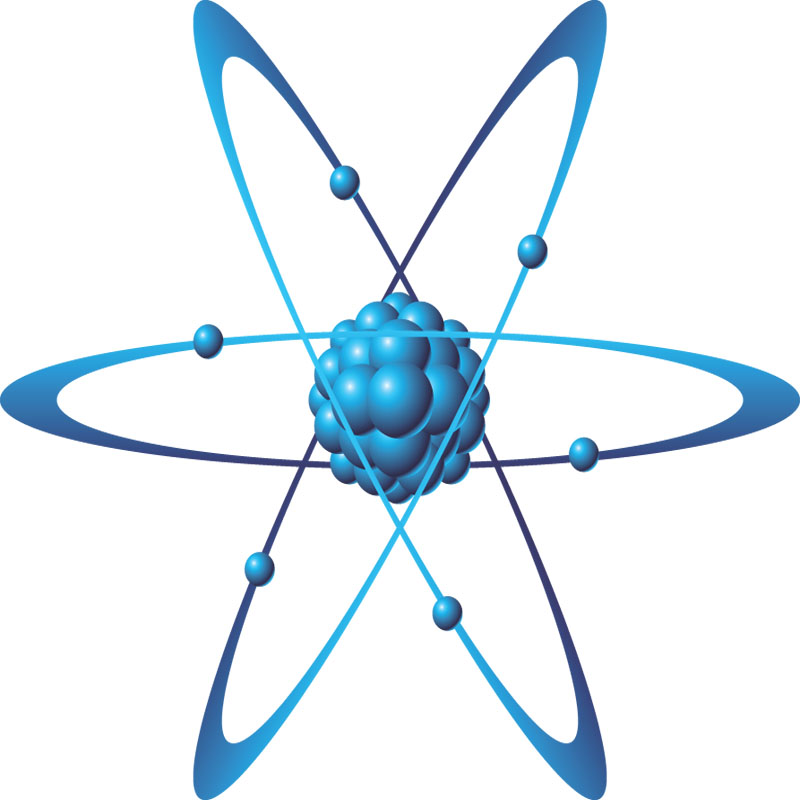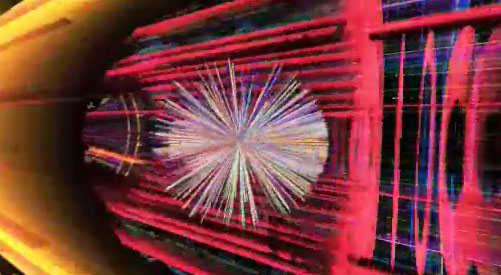SMU’s CERN physicists confirm new particle
Physicists from SMU and around the globe are euphoric over observing the “God particle.”

The search for the so-called "God particle" reached a major milestone on July 4 with the announcement from CERN that a new particle consistent with the Higgs boson particle has been observed.
SMU has been playing an significant role in the quest for this important particle within the atom and its discovery could help round out the Standard Model — which seeks to explain how the universe works.
The leader and principal investigator for SMU’s team of physicists working on CERN's Large Hadron Collider is Ryszard Stroynowski. (See his interview with CBS 11 News at right.) Blogging from CERN on the day of the announcement were Stephen Sekula, an assistant physics professor, and SMU postdoctoral fellow Aiden Randle-Conde .
Following is more information about the announcement, SMU's involvement and an overview of CERN by an SMU physicist.
Discovery of the Higgs boson ‘God particle’
Physicists from SMU and around the globe were euphoric Wednesday with the revelation that a new particle consistent with the Higgs boson “God particle” has been observed.
Described as a great triumph for science, the observation is the biggest physics discovery of the last 50 years and opens what scientists said is a vast new frontier for more research.
The achievement is the result of the global CERN scientific collaboration of thousands of scientists, including physicists from SMU, and CERN’s massive $10 billion Large Hadron Collider proton smasher.
“The observation opens up clear directions for physicists at SMU and throughout the world to study the properties of the Higgs,” said Stroynowski. “The experimental physics group at SMU has been involved since 1994 and is a major contributor to this study. This discovery was many years in the making, but it was worth the wait.”
A Surge of Seminars; Spying Mount Higgs?
In the run-up to the announcement, Stephen Sekula blogs about the growing excitement and what it means:
One of my colleagues jokingly referred to July 4 as “Higgsdependence Day.” Of course, the Americans in my circle of colleagues find it both fun and frustrating that the big CERN seminar (announcing the state of ATLAS and CMS searches for the Standard Model Higgs Boson) is on July 4, but at a time of day in Europe that corresponds to VERY early morning in the U.S. (9am CEST, 2am US Central). That’s OK; obviously, with the International Conference on High-Energy Physics (ICHEP) being in Melbourne, Australia – a full 7 hours ahead of CERN – it is critical to have an event that is both convenient at CERN and at ICHEP so people at both places can participate in the seminar.
But wait! CERN announced a week ago the seminar on ATLAS and CMS Higgs searches, and now Fermilab in Batavia, IL has announced THEIR OWN seminar on their Higgs searches on July 2. Their seminar is currently titled, “CDF and DZero Higgs Results with the Full Tevatron Data Set.”
It’s worth reviewing a bit why all of this is so interesting. In December, 2011, ATLAS and CMS presented their first results in the search for the Standard Model Higgs Boson using a large data sample from the Large Hadron Collider (LHC). These results were preliminary at the time, and they were followed by internally reviewed and approved papers that were soon-after published in leading journals in the field. . .
Fiber-optic data link is critical in the hunt
A tiny optoelectronic module designed in part by SMU physicists plays a big role in the world’s largest physics experiment at CERN in Switzerland, where scientists are searching for the “God” particle.
The module, a fiber-optic transmitter, sends the Large Hadron Collider’s critical raw data from its ATLAS experiment to offsite computer farms. From there, thousands of physicists around the world access the data and analyze it for the long-sought-after particle, the Higgs boson.
Now as a result of SMU’s role on the LHC data link, SMU Physics Research Professor Annie Xiang has won a three-year research and development grant with $67,500 in support annually from the U.S. Department of Energy to advance the design of the optoelectronic module.
Meet some of the SMU ATLAS Group
Meet some of the SMU group who are CERN-side, including Tingting Cao (SMU graduate student); Renat Ishmukhatemov (newly minted SMU Ph.D., now at The Ohio State University); SMU post-doctoral scholar Aidan Randle-Conde; SMU Assistant Professor Stephen Sekula; and Julia Hoffman (now a post-doctoral scholar at Academia Sinica on the AMS-02 Experiment)
CERN officially announces the new particle
Geneva (4 July 2012) — At a seminar held at CERN today as a curtain raiser to the year’s major particle physics conference, ICHEP2012 in Melbourne, the ATLAS and CMS experiments presented their latest preliminary results in the search for the long sought Higgs particle. Both experiments observe a new particle in the mass region around 125-126 GeV.
From the release: The next step will be to determine the precise nature of the particle and its significance for our understanding of the universe. Are its properties as expected for the long-sought Higgs boson, the final missing ingredient in the Standard Model of particle physics? Or is it something more exotic?
(Image from CERN animation of a heavy ion collision.)“We observe in our data clear signs of a new particle, at the level of 5 sigma, in the mass region around 126 GeV. The outstanding performance of the LHC and ATLAS and the huge efforts of many people have brought us to this exciting stage,” said ATLAS experiment spokesperson Fabiola Gianotti, “but a little more time is needed to prepare these results for publication.”
"The results are preliminary but the 5 sigma signal at around 125 GeV we’re seeing is dramatic. This is indeed a new particle. We know it must be a boson and it’s the heaviest boson ever found,” said CMS experiment spokesperson Joe Incandela. “The implications are very significant and it is precisely for this reason that we must be extremely diligent in all of our studies and cross-checks."
“It’s hard not to get excited by these results,” said CERN Research Director Sergio Bertolucci.
Learn more about CERN
This SMU video featuring Physics Professor Fred Olness was made in 2008.
